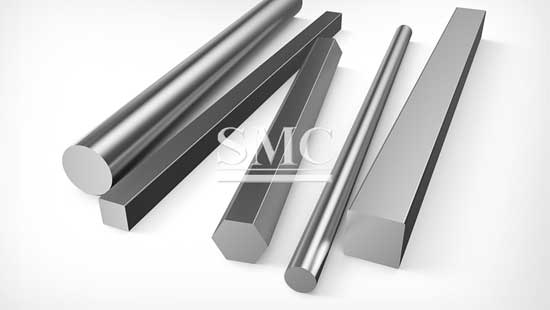
- Company overview The heart of SMC Vision & Philsophy Partnership Certifications Company culture
- Our service Design and Engineering Maintenance and Service Examine Production Line Upgrade and Transformation Storage and Logistics Processing, Trading and Distributor
- Management Our history Global responsibility Info Center
- Procurement center Internship
- Metal Steel Products Stainless Steel Products Aluminum Products Copper Products Galvanized Steel and PPGI Special Alloy Building Material
- Containers ISO Standard Container Equipment Container Storage Container Refrigerated/Reefer Container Offshore Container Container House Tank Container Container Fittings Container Trailer
- Gas Cylinder & Fire Extinguisher Cryogenic Liquid Cylinder Oxygen Gas Cylinder Storage Tank CNG Gas Cylinder LPG Gas Cylinder Hydrogen Gas Cylinder Nitrogen Gas Cylinder Industry Gas Cylinder Fire Extinguisher
- Metal Machinery Forming Machine Cutting Machine Processing Machine Bending Machine Block Machine Other Machinery Motor Spare Parts
- Mechanical Products Miscellany Mooring Equipment Marine Equipment Vehicle Industry Pressure Vessel Conveyor Belt Laser Equipment Bearing
- Electrical System Power Distribution Automation Electrical Cable Solar Power System Electric Protection System Transformer Production Line Lighting System
- Project Plastic Pipes and Pipe Fittings Fiberglass Reinforced Plastic Pontoon System
What about Stainless Steel Surface Damage?
What about stainless steel surface damage? For most people this should be a big problem! So today I will lead you to solve this troublesome problem, and you will not be afraid of stainless steel damage in the future!
First, let's first look at the cause of the damage to the stainless steel surface; there are many reasons for stainless steel surface damage, including dust, floating iron powder or embedded iron, scratches, rust spots, rough grinding and machining, welding arc marks, Welding spatters, fluxes, weld defects, oils and greases, residual adhesive paints, chalk and marker prints. The different solutions for each reason are different!
Dust
Production is often done on dusty sites, often with lots of dust in the air that constantly land on the surface of the equipment. They can be removed with water or an alkaline solution. However, adhering dust requires high pressure water or steam for cleaning.
Floating iron powder or embedded iron
On any surface, free iron rusts and corrodes the stainless steel. Therefore, it must be cleared. Floating powder can generally be removed with dust. Some adhesion is strong and must be treated as embedded iron. In addition to dust, there are many sources of surface iron, including cleaning with ordinary carbon steel wire brushes and shot blasting with sand, glass beads or other abrasives previously used on plain carbon steel, low alloy steel or cast iron parts, or The aforementioned non-stainless steel products are ground near stainless steel parts and equipment. Wire ropes, spreaders and iron on the work surface can easily embed or smear the surface if the stainless steel is not protected during the blanking or lifting process.
Ordering requirements and post-production inspections prevent and detect the presence of free iron. ASTM Standard A380 [3] specifies the rust test method for the inspection of iron or steel particles on stainless steel surfaces. This test should be used when there is absolutely no iron available. If the results are satisfactory, wash the surface with clean pure water or nitric acid until the dark blue color completely disappears.
As indicated in Standard A380 [3], if the rust test solution cannot be completely removed, it is not recommended to use this test method on the process surface of the equipment, ie the direct contact surface used to produce human consumables. A relatively simple test method is to expose the water for 12 to 24 hours to check for rust spots. This test is poorly sensitive and time consuming. These are test tests, not cleanup methods. If iron is found to exist, it must be cleaned by chemical and electrochemical methods described later.
Scratch
In order to prevent the accumulation of process lubricants or products and dirt, mechanical cleaning of scratches and other rough surfaces must be carried out by special stainless steel polishing machines. Thermal tempering and other oxide layers if welding or grinding The medium-sized stainless steel is heated to a certain high temperature in the air, and the chrome oxide thermal tempering color appears on both sides of the weld, the lower surface of the weld, and the bottom. The thermal tempering color is thinner than the oxidized protective film and is clearly visible. The color depends on the thickness and can be seen in iridescence, blue, purple to pale yellow and brown. Thicker oxides are generally black. It is due to staying at a high temperature or for a long time at a higher degree. When any such oxide layer is present, the chromium content of the metal surface is reduced, resulting in reduced corrosion resistance in these areas. In this case, not only the thermal tempering color and other oxide layers are eliminated, but also the chromium-depleted metal layer underneath them should be cleaned.
Rust
Stainless steel products or equipment are sometimes rusted before or during production, which indicates that the surface is heavily contaminated. The rust must be removed before the equipment is put into use. The thoroughly cleaned surface should be inspected by iron test and/or water test.

Rough grinding and machining
Both grinding and machining can result in rough surfaces with defects such as grooves, overlaps and burrs. Each defect may also damage the metal surface to such a depth that the damaged metal surface cannot be cleaned by pickling, electropolishing or shot blasting (such as dry blasting, abrasive glass beads). Rough surfaces can be the source of corrosion and deposition products. Cleaning weld defects before re-welding or removing excess welds can not be ground with coarse grinding. In the latter case, it should be ground with a fine abrasive.
Welding arc mark
When the welder ignites the arc on the metal surface, it will cause surface roughness defects. The protective film is damaged, leaving a potential source of corrosion. The welder shall ignite the arc on the welded bead or on the side of the weld joint. The arc traces are then melted into the weld.
Welding splash
Welding spatter has a lot to do with the welding process. For example: GTAM (gas shielded tungsten arc welding) or TIG (inert gas shielded tungsten soldering) does not splash. However, when using two welding processes of GMAW (gas shielded metal arc welding) and FCAW (arc welding with flux core), if the welding parameters are used improperly, a large amount of splash will be caused. When this happens, the parameters must be adjusted. If you want to solve the problem of welding spatter, apply anti-splash agent on each side of the joint before welding, which can eliminate the adhesion of spatter. This anti-splash agent and various spatters can be easily removed after soldering without damaging the surface or causing minor damage.
Flux
The welding process using flux is manual welding, flux core arc welding and submerged arc welding. These welding processes leave fine flux particles on the surface, and ordinary cleaning methods cannot remove them. This particle will be a source of corrosion for crevice corrosion and must be removed by mechanical cleaning.
Welding defect
Welding defects such as undercuts, incomplete penetration, dense pores and cracks not only reduce the firmness of the joint, but also become a source of corrosion for crevice corrosion. These results are improved when they are cleaned and they entrain solid particles. These defects can be repaired by re-welding or re-welding after dressing.
Oil and grease
Organic substances such as oil, grease and even fingerprints can become sources of corrosion for localized corrosion. Since these substances act as barriers, they affect the chemical and electrochemical cleaning effects and must be thoroughly cleaned up. ASTM A380 has a simple WATERBREAK test to detect organic contaminants. During the test, water is poured from the top of the vertical surface, and the water separates along the periphery of the organic matter during the downward flow. Flux and acid chemical cleaner remove oil and grease.
Residual binder
When the tape and the protective paper are torn off, a part of the adhesive remains on the stainless steel surface. If the adhesive is not yet hard, it can be removed with an organic solvent. However, when exposed to light and/or air, the binder becomes hard and forms a source of corrosion for crevice corrosion. Mechanical cleaning is then required with fine abrasives.
Paint, chalk and marker pen
The effects of these contaminants are similar to those of oils and greases. It is recommended to wash with a clean brush and clean water or alkaline cleaner, or with high pressure water or steam. Stainless steel mainly composed of ferrite in use. The chromium content is between 11% and 30%, and has a body-centered cubic crystal structure. These steels generally do not contain nickel, and sometimes contain a small amount of elements such as Mo, Ti, Nb, etc. These steels are characterized by large thermal conductivity, small expansion coefficient, good oxidation resistance and excellent resistance to stress corrosion. Parts that are corroded by water vapor, water, and oxidizing acids. Such steels have the disadvantages of poor plasticity, post-weld plasticity and corrosion resistance, which limit their application. The application of refining technology (AOD or VOD) can greatly reduce the gap elements such as carbon and nitrogen, thus making this type of steel widely used.
For more information, please visit:https://www.shanghaimetal.com/stainless_steel_bar-220.htm
Shanghai Metal Corporation is a trusted aluminum alloy, aluminum foil price, stainless steel price and stainless steel manufacturer, kinds of stainless steel in china.
For our full list of products that we offer check out our website here. Be sure to join the conversation in our LinkedIn group, Facebook, Twitter .
Try also our WeChat by scanning the QR code below.
Carol X.//SMC Editor

